Ah, the Nomos Ludwig. You know, the one with the Roman numerals. A mainstay of Nomos’ collection, it doesn’t get nearly the same praise or fanfare as their other, flashier (by Nomos standards) timepieces, yet persists and continues to develop along with their other lines. Most recently, Nomos announced a trio of Ludwig limited editions to celebrate 175 years of watchmaking in Glashütte. An appropriate choice for such an occasion, the Ludwig is Nomos’ most classically styled watch. And for the limited editions, they played off of this fact and amplified it with a few choice, highly attractive details.
Lesser discussed, at the same time as launching these LEs, Nomos added another model to the core Ludwig collection, the Ludwig Neomatik 39. While Nomos is restrained with their designs, they are quite prolific with their versions, often expanding a line into several models, each with a slightly different diameter, movement, or color. In this instance, the 39mm (technically less) Neomatik (indicating their ultra-thin DUW 3001 caliber), adds a thin, medium/large option above the existing 38mm models and below the largest 41mm models.
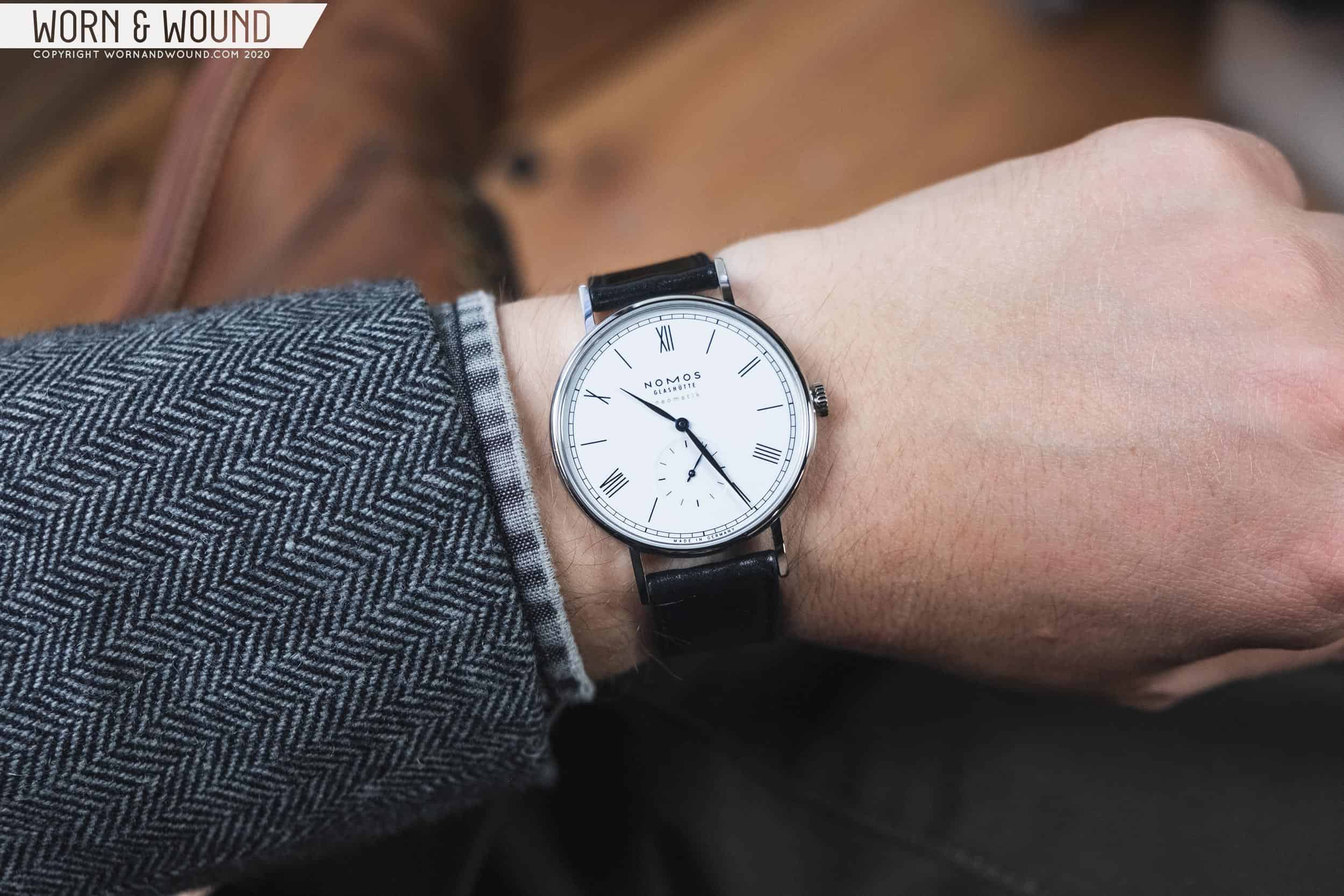
In this article, I am going to take a look at two Nomos Ludwig models, both Neomatik 39s, one the core model, the other from the limited edition 175 Years Watchmaking trio. While built on the same platform and born from the same Ludwig DNA, the results are charmingly different. But why look at both? Well, by the time you read this, whether it be shortly after publication or a few years beyond, the limited edition is likely to be gone, being constrained to just 175 watches. The core model, however, will hopefully remain, making this review still at least partially relevant.
Case
Other than a few words on the back, the cases of the two Ludwig 39s are identical. Measuring 38.6 x 48.4 x 7.3mm, they are on the large side for Nomos, but not for watches in general, and are exceptionally thin for automatics (for reference, it’s the same thickness as the hand-wound Ludwig). From above, the Ludwig is all dial, with only a sparing amount of metallic glint coming from the bezel and straight lugs. It would be understandable if you were to mistake the Ludwig case for the Tangente case from overhead, or perhaps expect it to be the same, but it’s in fact quite different once viewed from the side.
The harsh slab sides and kinked lugs are replaced with an elegant bowl shape and arced lugs. The result is that it’s far softer on the eyes, balancing out the more classical elements coming from the dial. Typically, at least in my experience, German watches with Roman numerals tend to be in the “Marine Chronometer” style, and fit with large, severe cases. The Ludwig has always been refreshing in this regard.

Flipping the watch over you’ll find minimally decorated pressure-fit case backs with large display windows. The DUW 3001 movements are on full display, which is excellent as this is a movement worth enjoying. As noted before, the limited edition includes some extra text reading “Limited Edition Ludwig – 175 Years Watchmaking Glashütte” as well as numbering. The core model just says “5 ATM” and “Ludwig 3”.
Dials
While the cases are the same, the dials differ in interesting ways. Two watches from one family at two different points on a timeline. If one were to imagine what the first version of the Ludwig might have looked like – not the first Nomos made, but one far older and likely a pocket watch – the 175 LE is close to what they would come up with. In contrast, the core model is plucked from much further along, somewhere in the mid-twentieth century. It’s harsher and colder, and clearly more modern.
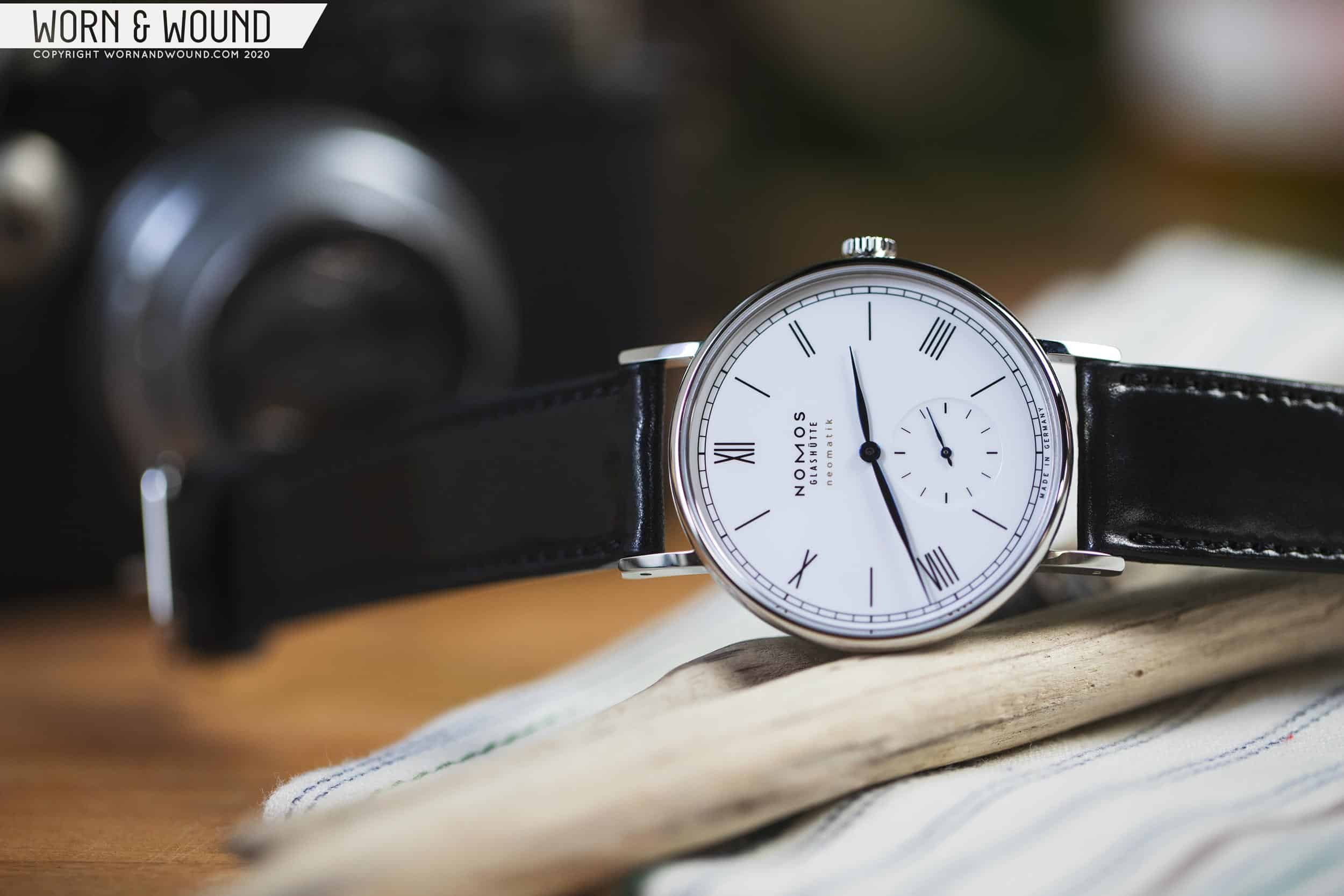
The dial of the 175 LE speaks to the original hand-wound Ludwig design, with an index of large, thin Roman numerals alternating with equally-weighted sticks, bounded by a railroad track for the minutes. Classic through and through, though the minimal style of the Roman numerals adds a contemporary feel. The sub-dial at six features black lines at intervals of five, darkening at the cardinal points. The two features that give the 175 LE it’s unique feel are the enamel-white lacquer surface and the heat-tempered leaf hands.
The enamel-white lacquer was actually used before on the Timeless Luxury Ludwig LE, and I equally enjoyed seeing it now as then. The cleanest white imaginable, it has a perfect gloss finish and porcelain-like appearance. Rather than a sharp step down at the edge of the sub-dial, there is a softer radius, speaking to a thicker, viscose coating. The leaf hands, however, are a departure for Nomos, and a welcome one at that.
The elegant curves of gently bowing leaf forms change the personality of the watch. Softer and more humanistic than Nomos’ standard stick hands, the leaves are the perfect balance of increased ornament and restraint. They maintain that quintessential Nomos simplicity, while clearly hinting at an older age of watchmaking. While used for a purpose here, I’d love to see Nomos utilize these, or similar hands, on more future models. The only detail that slightly betrays the lightly-antique aesthetic of the 175 LE is the inclusion of “Neomatik” below the Nomos logo. Giving the context of the watch, I think they could have left that out.
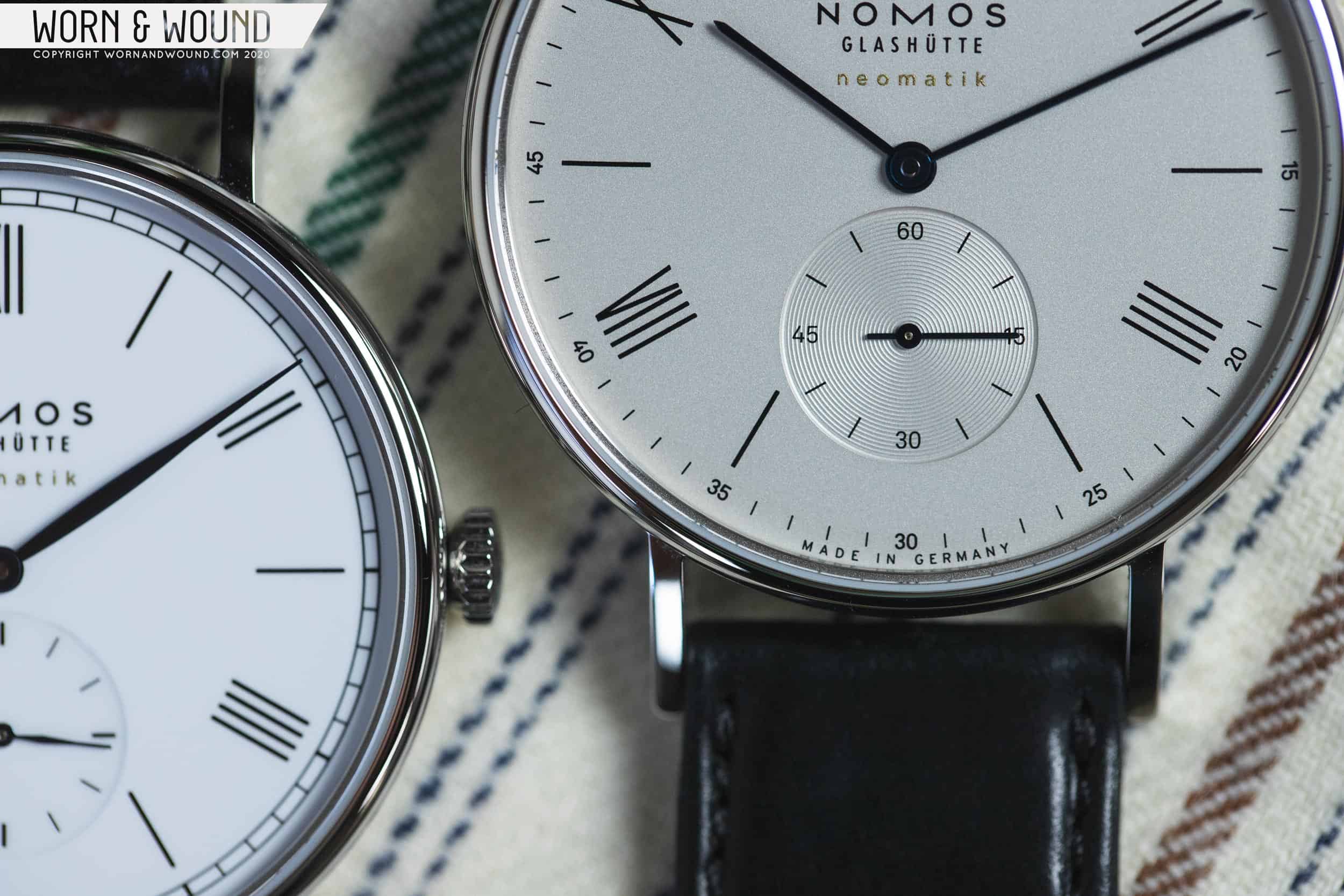
In contrast to the bright enamel-white, the core Neomatik 39 features a steely, silver-gray dial with a satin finish. The Roman numerals and lines are the same, though appear a touch bolder, likely because of the different printing surface. In a change from both the 175 LE and classic Ludwigs, the railroad index has been replaced with Arabic minute numerals at intervals of five and small dashes in between. This immediately creates a striking difference as the dial feels more open and sparse. Additionally the use of extra numerals, and Arabic at that, brings a more technical feel to the dial.
Similarly, the sub-dial at six has been stamped down with a hard edge and features circular graining within for a metallic sheen. Arabic numerals have been added here every 15 seconds, alternating with black lines, similarly adding an increased level of detail. Combined with heat-blued stick hands, the Neomatik 39 feels like a fusion between the classic Ludwig and the more purely Bauhaus-styled Tangente.
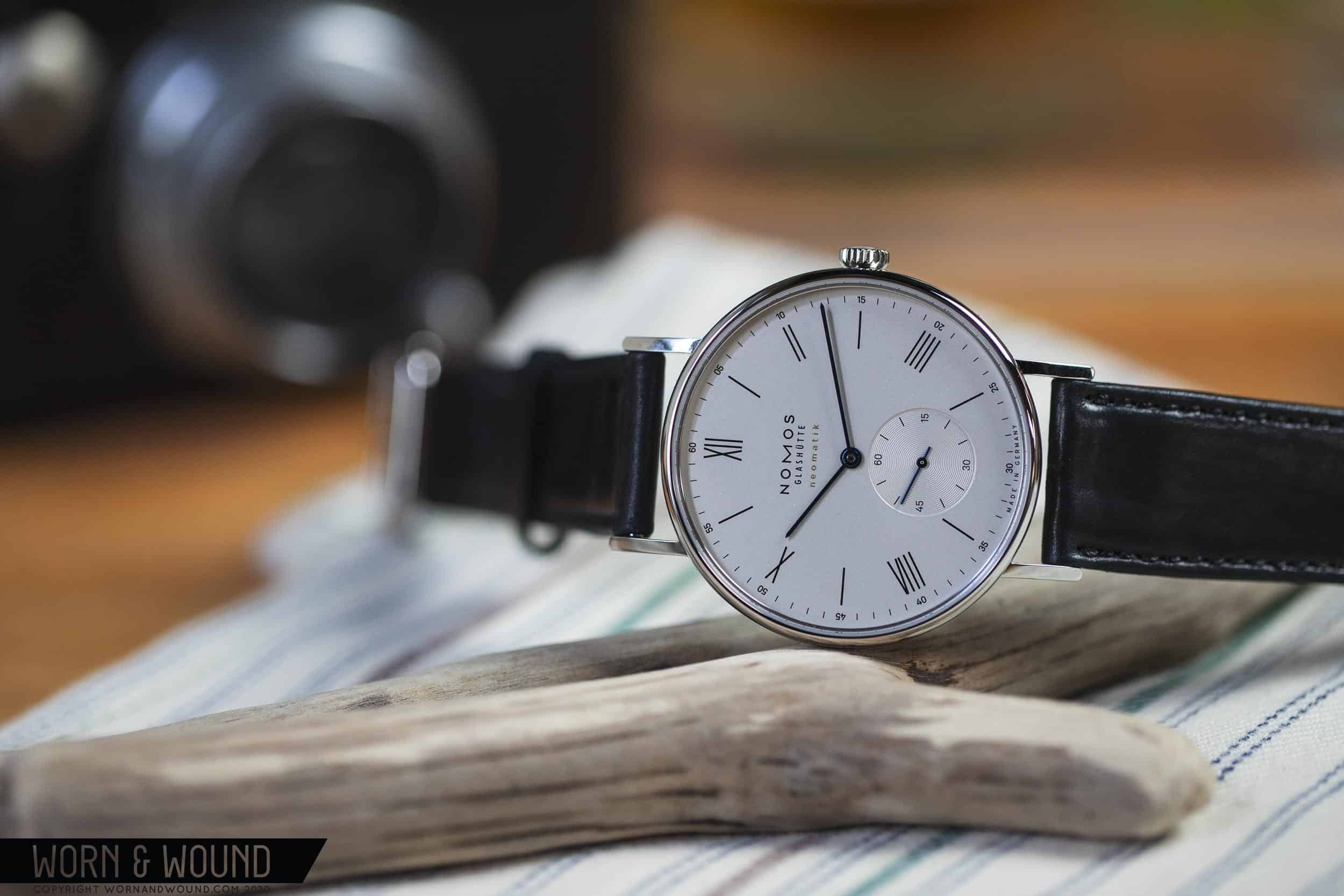
Similar, yet remarkably different, both watches have a distinct charm. The 175 LE is friendlier, albeit fancier, and easier-to-digest while the core model, with its precise numerals and gray surface, is more of what I expect from a Nomos. The former feels like a special occasion watch, and the latter an everyday work watch. It’s actually quite remarkable how just a couple of small details can make such a difference.
Movement
The DUW 3001s found inside of the Neomatik Ludwigs is part of Nomos’ newest generation of in-house automatic calibers. German-made and featuring 27-jewels, hacking, hand winding, up to 43 hours of power reserve, and a frequency of 21,600bph, the most notable feature of this movement is its size. Coming in at 3.2mm, it’s one of the thinner automatics you’ll find out there, certainly at the price point. Visible through the display case backs on both watches, the DUW 3001 is fully decorated with striping, perlage blue screws, and gold-tone type.

Straps
Both Ludwigs are mounted to 19mm black shell cordovan straps with rembordé edges, which is to say rolled, rather than cut and painted. While nicely executed, I personally would have preferred straps with a slightly greater taper as these felt a bit wide in comparison to the gentle case. And, not to go on too much of a strap-making rant, but making a rembordé cordovan strap is a bit bizarre, especially since these appear to feature the backside of cordovan as lining. This would essentially entail splitting the cordovan from its back, thinning out the edges, reapplying the back, and rolling the edges underneath it for the rembordé look. Given that shell cordovan is such a remarkable leather, known for its strength even when thin, this feels like an unnecessary amount of reworking of it, which I imagine could actually lower its long term durability. Ok, rant over.

Wearability
While I always feel a little dubious when I see a Nomos model get larger, at 38.6mm the Ludwig Neomatik 39s are still in relatively safe territory. At this size, they no longer feel like conservative dress watches, rather watches for everyday and casual wear, at least on my 7” wrist. Thin bezels make for “all dial” cases that, at this size, begin to feel a touch flat and wide. They aren’t too far gone, like the Tangente Sport, but they are beginning to hit the edge. As is, once I got used to their more formal trappings, I quite enjoyed wearing the Ludwigs.
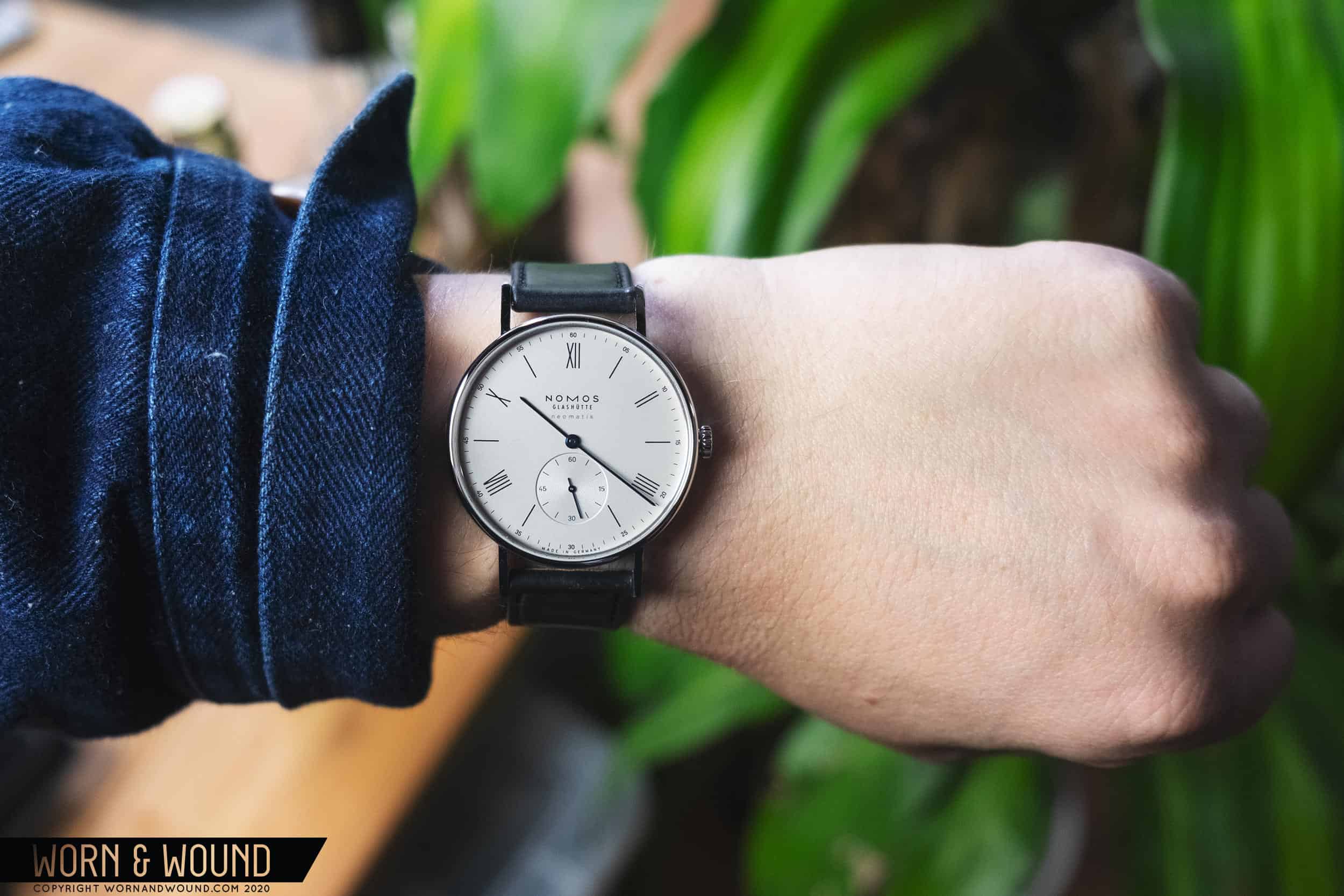
Being used to wearing tool divers and chronographs at this point, strapping something elegant, wispy thin, yet purposeful and functional to my wrist was refreshing. As I’ve said in previous Nomos reviews, in terms of my lifestyle, Nomos’ are probably the best match. And models intended for day-to-day wear are still better. As a watch to wear on walks around NYC, at my desk, and the occasional outdoor bar (let’s not forget, this was written in 2020), the scale and attitude of the Ludwig Neomatik 39 suits the situation. It’s never cumbersome, it’s easy to read (unless in the dark), and on the core model in particular with its gray dial and small numerals, has an aesthetic that could be described as urban. I also have to say that having worn Tangentes and similarly styled watches, I prefer the softer lines of the Ludwig on the wrist.
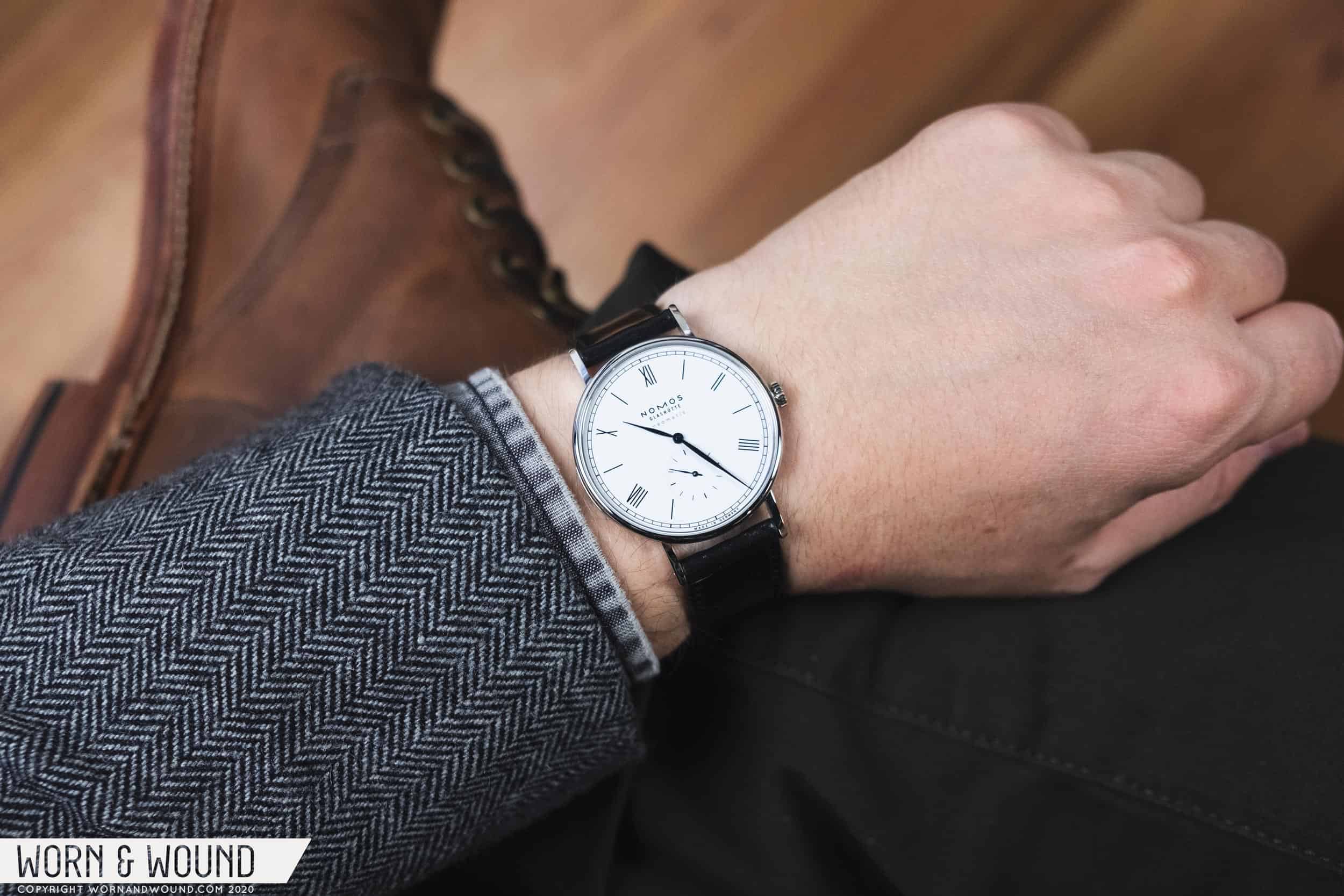
The limited edition model feels a bit more decadent and elaborate, even if there is ultimately less happening on the dial. It catches light in more dramatic ways, between the larger hands and enamel-like surface, and the ultra-clean white dial jumps off the wrist. While still highly appealing, it’s not as suited to me, or perhaps I to it, as the core model. That said, with such limited quantities, this is more of a collector’s piece than one’s next day-to-day watch.
Conclusion
While I’m not sure if the Ludwig will ever be on the top of my Nomos shopping list, the more time I spend with the line, the more I get it. It’s a subtle and sophisticated watch, perhaps even more so than the iconic Tangente. It mixes the complex and perceived-as-formal structures of Roman numerals with a stripped-down, Bauhaus-inspired aesthetic. The two ideas don’t seem to meld, yet the Ludwig is a remarkably balanced watch. The one element they are missing that I find I most enjoy from Nomos is a touch of playfulness, and perhaps that’s what holds me back.
With the Ludwig Neomatik 39 I do think Nomos has found an interesting combination of size and design. The modernized layout (no railroad index) changes the watch in a fairly significant way. A way that despite giving it a more modern, if austere, look and feel, made it more in line with my tastes. The size, though verging on big, still totally works, and is saved by the remarkably thin profile.
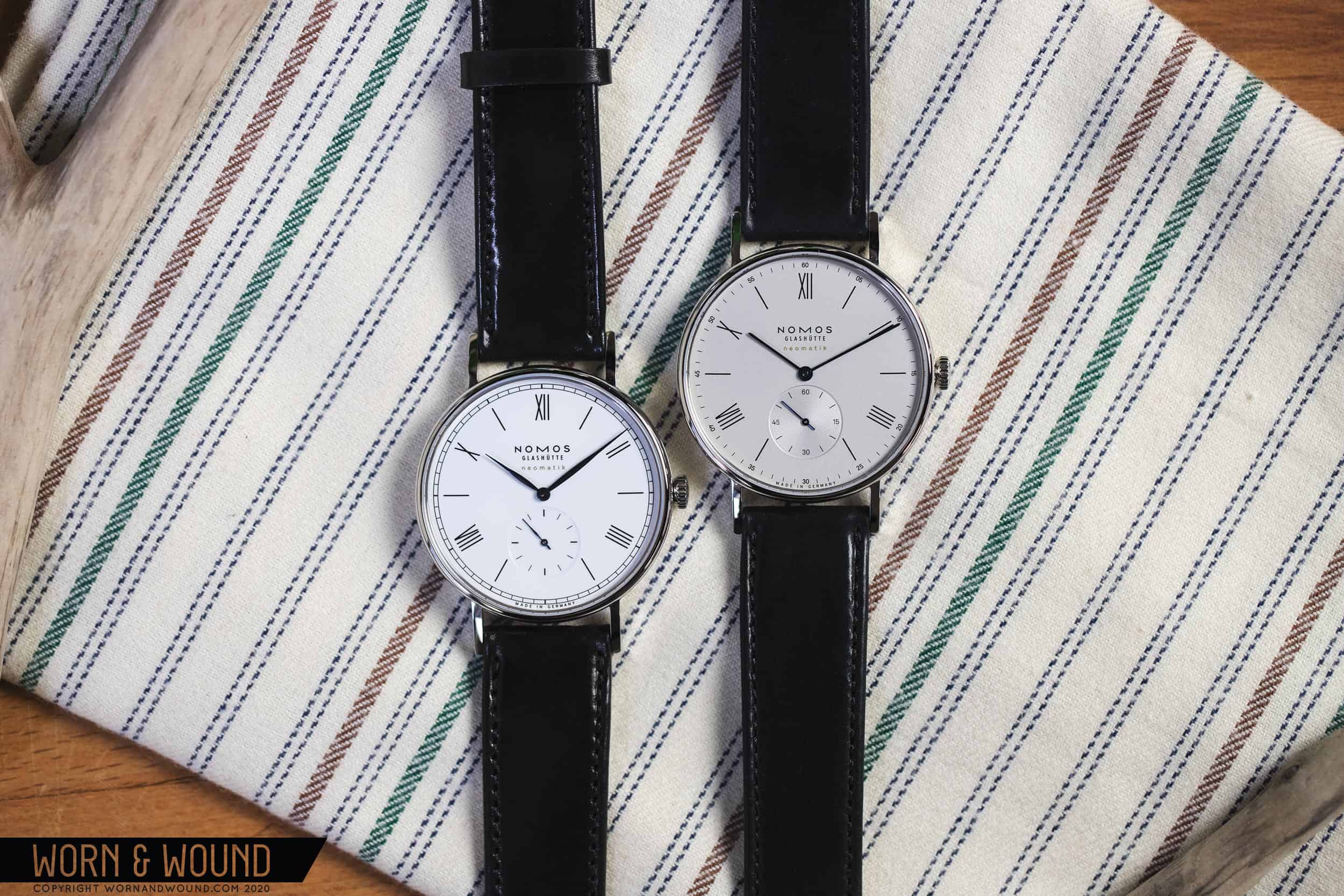
With a price tag of $3,700, the Ludwig Neomatik 39 is far from inexpensive, but as with most Nomos watches in the $2 – $4k range, still feels like a good value. It is a German-made, and Gashütte at that, watch with a very thin in-house automatic, that isn’t just a clone of a Swiss movement. In all ways, these are very fine watches, and if not for a past where Nomos watches were more aggressively priced, the price would be a touch easier to swallow. There also isn’t any other brand doing what Nomos does, at this price or any other, for that matter.
The 175 years of watchmaking in Glashütte LE is then a somewhat surprising exercise in winding the Ludwig back to another era. Though the changes are subtle, they are effective and give the LE a truly special feel. As said before, the leaf hands are gorgeous and make me wish Nomos could find a modern model to put them, or something similarly curvaceous and evocative, on full time. For people who have been waiting for something truly classical from Nomos, this is likely as close as they’ll get. Well, that is if they were lucky enough to grab one. Nomos

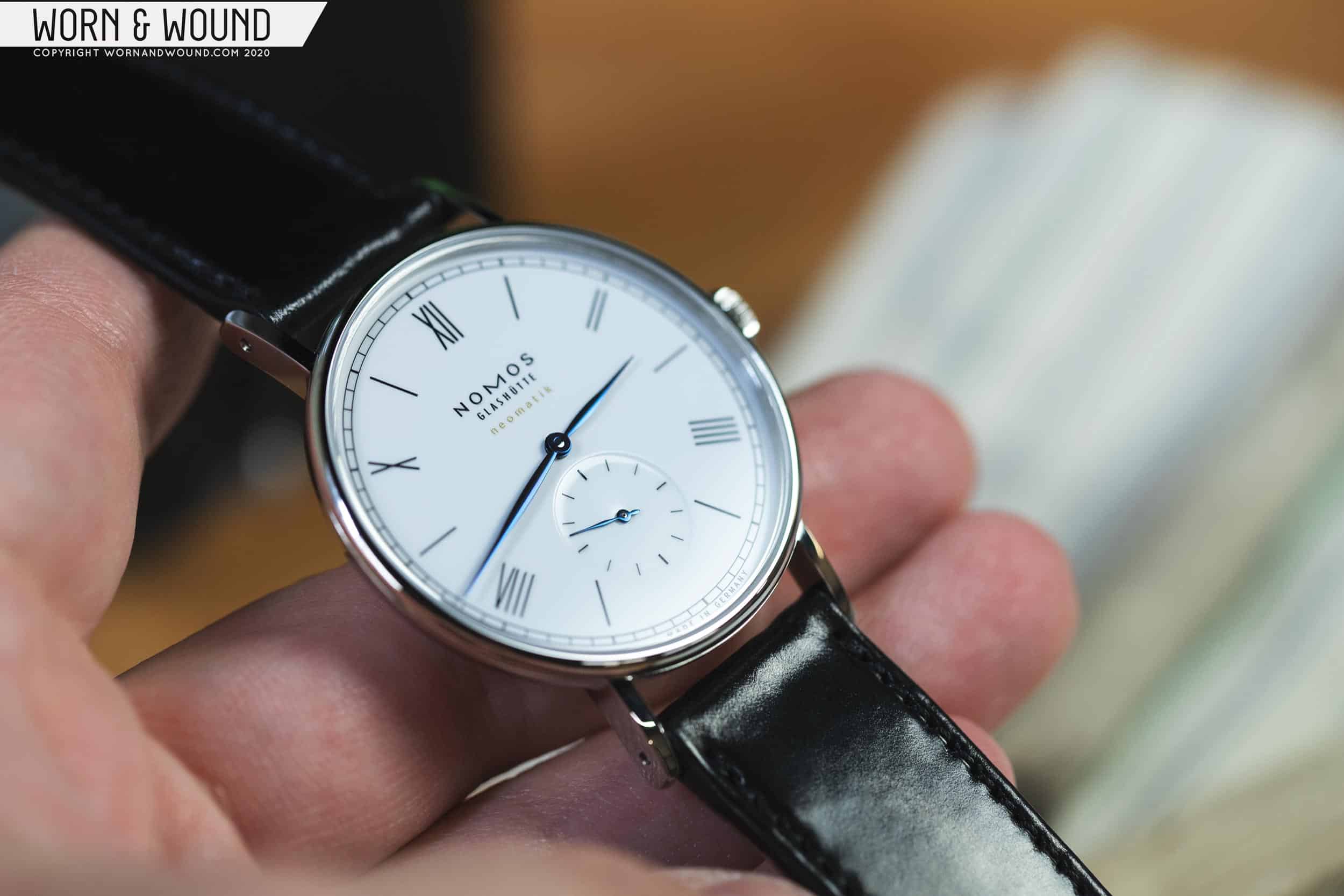
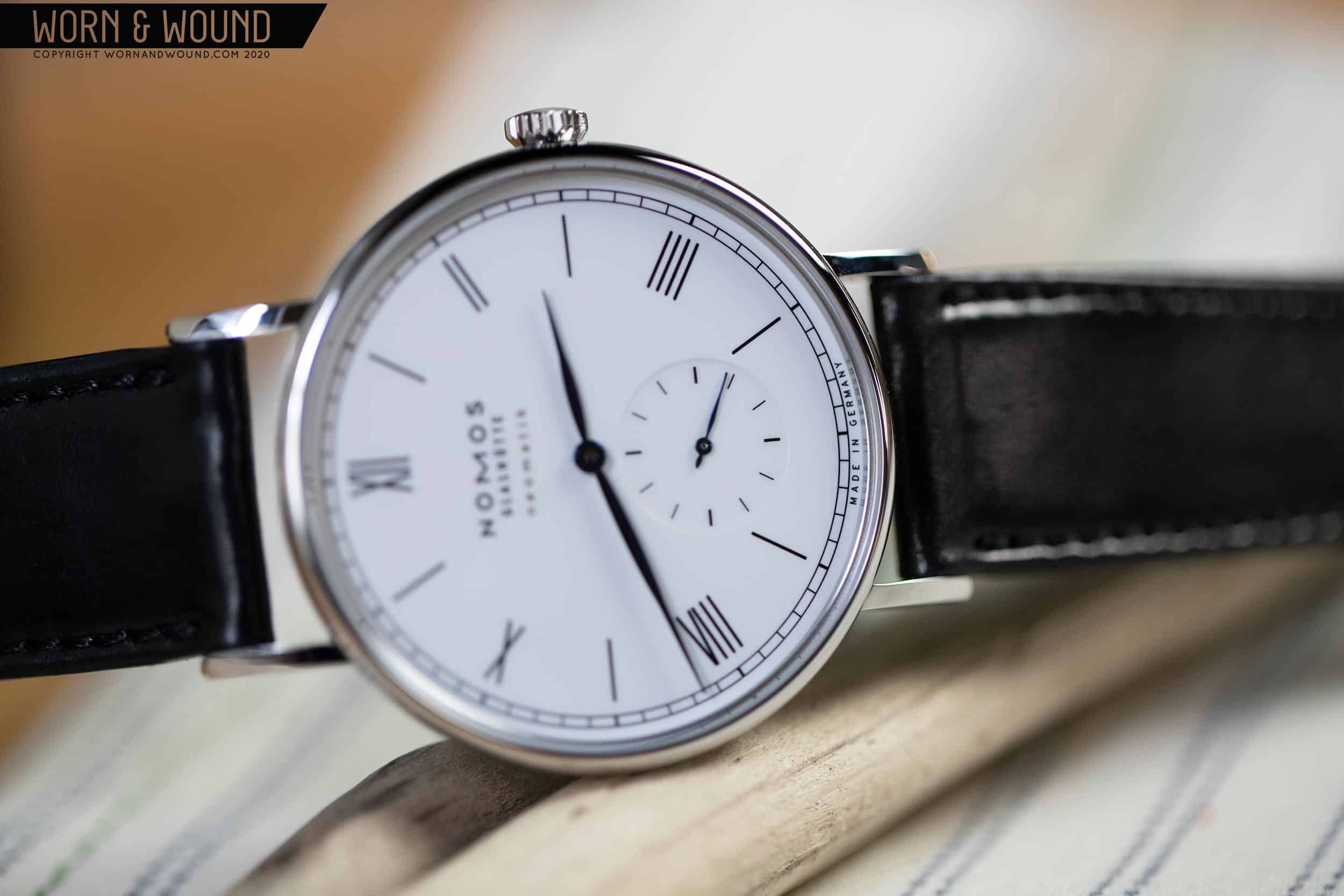
No comments yet.